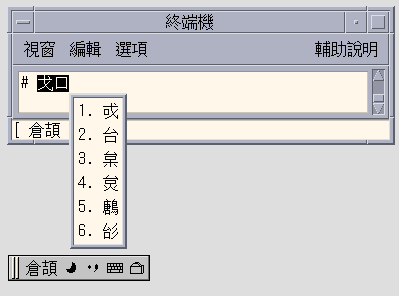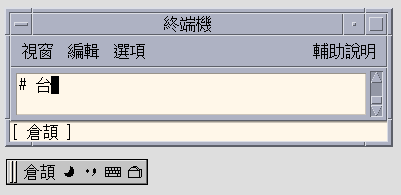TsangChieh Input Mode
Each tool's first input conversion mode is TsangChieh, a commonly used entry mode. TsangChieh is the default mode for typing Chinese (and other non-ASCII) characters when ASCII mode is toggled off. TsangChieh conversion works on the radicals that compose Chinese characters. Each Chinese character has a keystroke sequence made of the radicals that compose it. A TsangChieh keystroke sequence often uniquely defines a Chinese character, but sometimes a selection from multiple choices is required.
TsangChieh conversion mode can also be used to type the characters in the Chinese National Standard 11643. To type characters in this mode, press Z followed by the three-letter code assigned to the symbol by the standard.
Typing Characters in TsangChieh Mode
To type Chinese characters in this mode, type the Chinese radicals that make up the Chinese characters. If you do not have a Taiwan Chinese keyboard that shows the radicals on the keys, refer to a picture of the Chinese keyboard to see how the Chinese radicals map to your keyboard.
-
Type Control-spacebar to turn on TsangChieh mode.
The mode appears in the status area.

-
Type ir.
The TsangChieh input converter finds two matching characters and displays a lookup choice window:

-
Press 2 to select the appropriate character.
The radicals are converted and the correct character appears:

- © 2010, Oracle Corporation and/or its affiliates
